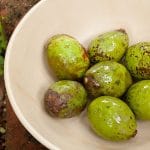
Hog Plum Curry is a typical dish during the Hindu Ganesh Chaturthi festival in Goa and Maharastra, yet this deliciously sweet spicy and tangy hog plum curry is commonly enjoyed whenever the hog plum is in season.
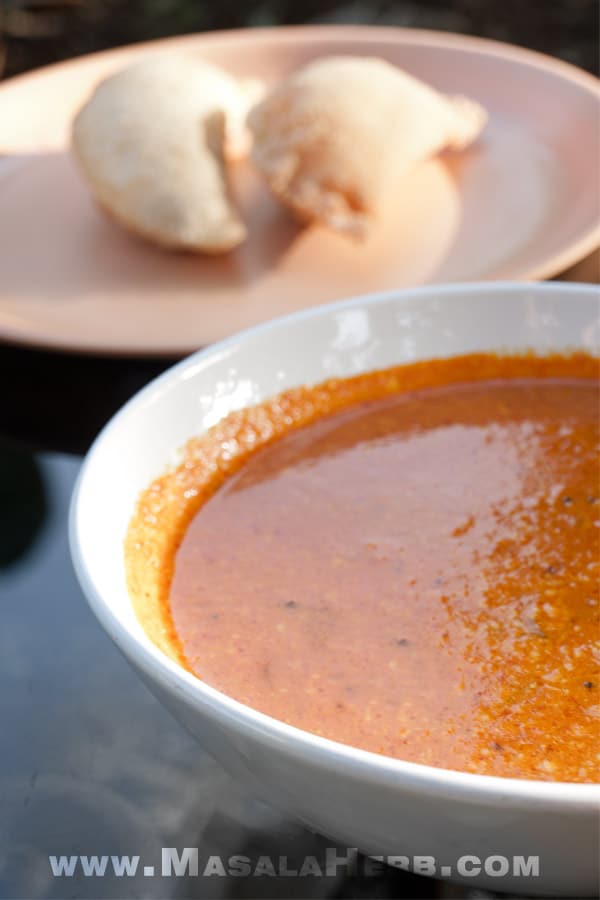
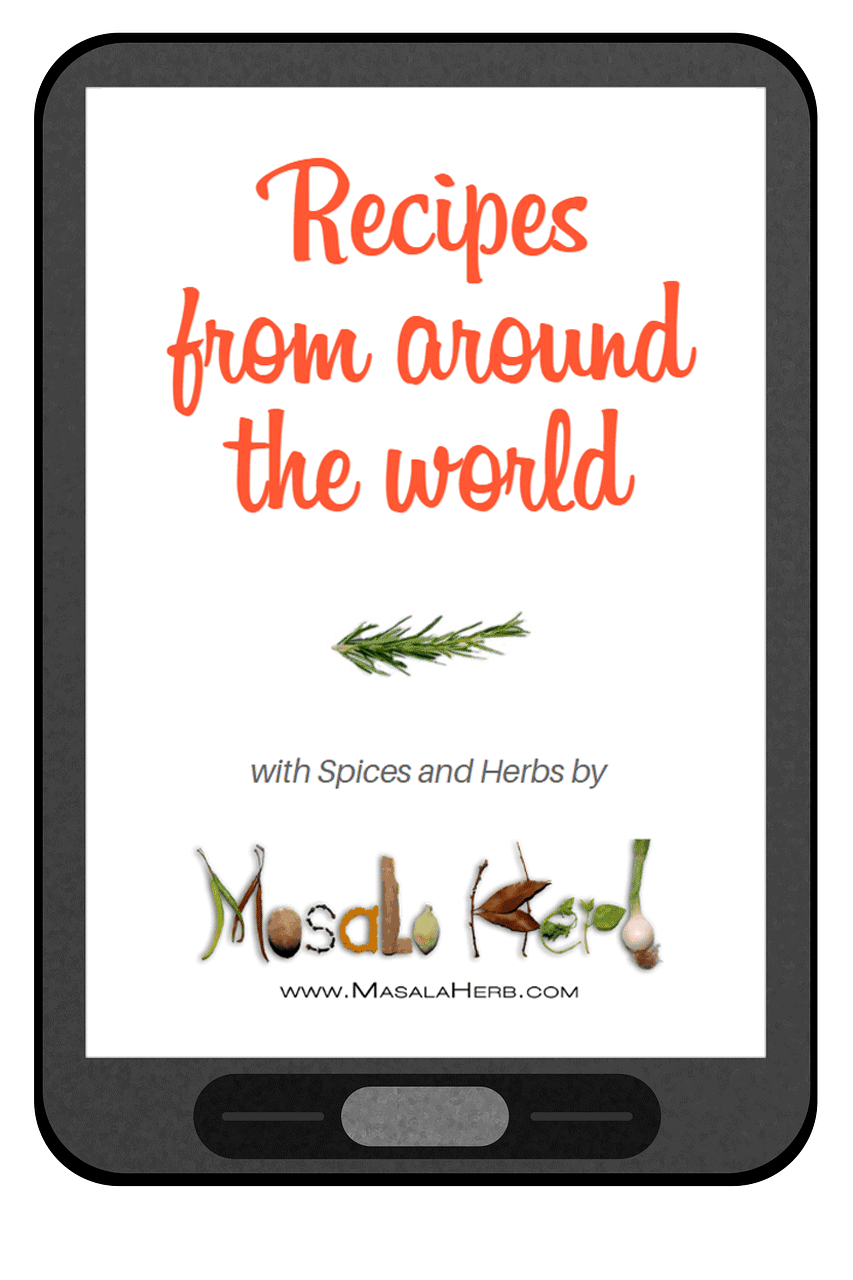
Global Food Recipes
with Spices and Herbs
Free E-Book available for a limited time. Grab yours now and get instantly inspired!
You missed out!
Years ago I learned about this curry with hog plums from our neighbors.
They are Hindus and they would prepare and share with us a bowl of this delicious tangy sweet but spicy curry during their Ganesh Chaturthi festivities, which is a popular Hindu festival on the Western coast of India.
📕 What is the hog plum?
They called this humble looking green, but hard, fruit "Ambade, Ambadi or Amade (अब्दे )" in Konkani, the local language in Goa.
However, finding ay translation in Konkani
(thanks to the twitter folks!)
The Hog Plum is in season in Goa during the monsoon, that means from July to September and during that time you can see local ladies selling them in the municipal markets, such as Mapusa market.
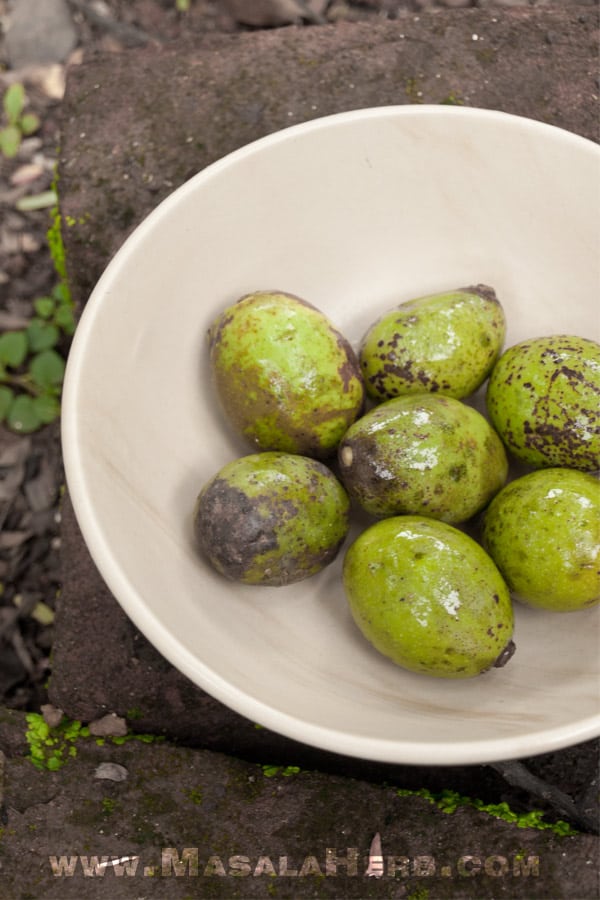
The Hog Plum has many names in India, so don't try to ask for the hog plum per se, because nobody will understand what you want in the markets.
Other names in other languages for the Hog Plum include:
- Ambade in Konkani,
- Amberella in Sri Lankan
- Pulicha kaai in Tamil
- Spondias, Hog Plum, Spanish Plums, Libas and Mombins in the different parts of the world.
There are a couple of different varieties of hog plums.
The Hog Plum can be commonly found in India in the south, as it needs a humid and tropical climate.
The fruit itself looks very plain, kind of like a tiny green mango, 2 inches big in average.
The skin is not more then a Millimeter thick and the flesh maximum up to 0.5 Centimeters the rest is a seed core.
Apparently, other hog plum varieties have lots more flesh to the core, so if you think you have found a hog plum, it might just be a different variety.
It is said that the Hog Plum originated in South America and came later on to the African continent and further even to the tropical South Asian lands.
In my research I discovered that in South America it is commonly used to make syrups, jellies and even vinegar.
Yet in Africa it seems to be less popular, but in India it is a common addition to Curries.
In fact Hindu families tend to eat much healthier and have a strict plant based diet.
Therefore, curries with unusual, lesser known ingredients, such as the hog plum, are more common.
In fact there are a bunch of ingredients, which look like weeds growing in my garden, that are used in their food preparation.
Often while these ingredients do not have an English name.
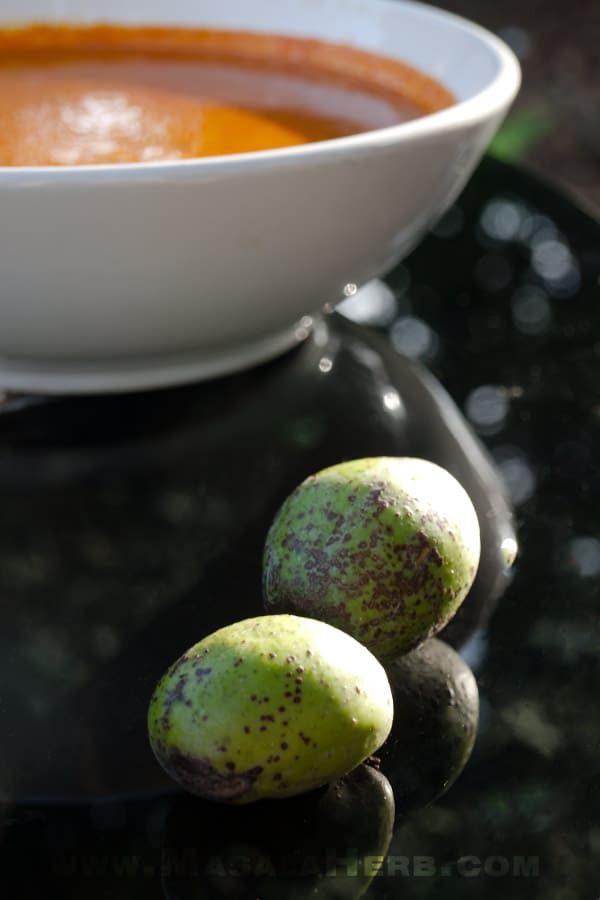
Luckily, I was able to learn more about the hog plum, as it's not completely uncommon as an ingredient in this world.
The Hog Plum seems to be rich in Vitamin C and B1.
I had a feeling that it is a good source of Antioxidants, since it is a very sour fruit.
Normally you suckle the flesh of the core and you twist your face expression like a monkey, except if you add it into the curry.
That is exactly why we keep the peeled hog plums to marinate with jaggery sugar (Palm Sugar) and salt, as it pulls out some of the extreme tangy sourness.
Also, the sweetness of the Jaggery sugar and the heat of the chilis, balances the extreme sourness.
The Hog Plum can be eaten as well, although there is not much to bite on.
You just need to suckle on the flesh that surrounds the seed core as it will have taken in some of the lovely sweetness of local jaggery.
The Hog Plum curry below is prepared without onion and is a one-pot dish.
It's important to keep the fruits to marinate first and then to prepare a smooth coconut based paste.
The Curry itself is completely Gluten-free and Vegan.
👁️ More Goan Curries
- Fish Curry Rice with Pumpkin Bhaji and
Rechead Mackerels - Drumstick (Moringa plant pod) Curry
- Egg Drop Curry
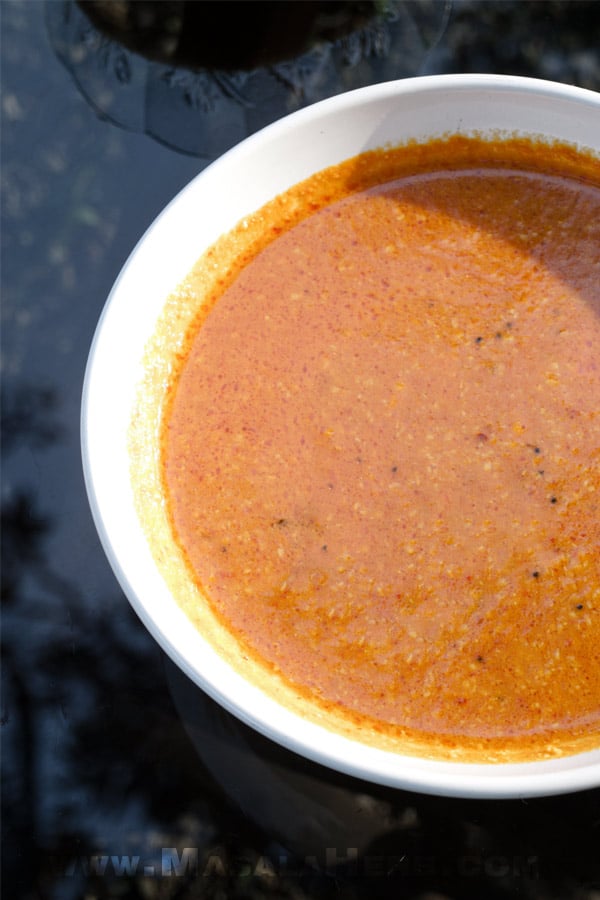
Dear Reader, have you ever tried the hog plum before?
📖 Recipe
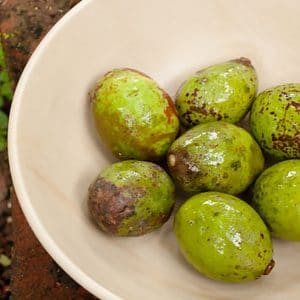
Hog Plum Curry Recipe
Ingredients
To Marinate:
- 7-8 Hog Plums
- Salt to taste
- 3-4 Tablespoons Jaggery Palm Sugar Molasses
For the Curry Paste:
- ½ cup Coconut Raw Freshly Shredded fresh, shredded
- 5-7 Red Chili Pepper whole dried
- 1 Teaspoon Turmeric Ground
To Cook:
- 1 Tablespoon Oil
- ½ Tablespoon Brown Mustard Seeds brown variety
- 6 piece Curry Leaves fresh preferably
- 3 cups Water
Instructions
- To prepare the hog plums, by peeling them carefuly, so that you don't take off all the good flesh. Do that with all fruits and place the peeled fruits into a bowl. Add Salt and Jaggery and mix it well. Leave to marinate for 30 minutes at least. Liquid from the fruit/palm sugar will be visible after 30 minutes in the bowl.





- Just before cooking, make the curry paste. Blend together the scraped coconut, the chili, the turmeric powder and some water to a yellow colored smooth paste.


- In a pan add the oil and temper the mustard seeds. Be careful because they jump out while heating up. After that add the curry leaves and the salty, sweet hog plums with the extracted liquid, stir fry for a minute.




- Directly continue to pour in the previously prepared paste and stir fry for a minute or two. Then pour in the water and mix well.

- Keep it on slow heat for about 20 minutes to cook, so that the different flavors get some time to incorporate with each other. Stir frequently in between and make sure not to over cook or use sudden high heat or the curry might curdle. Serve with rice or chapati hot.
- Optionally: My neighbor taught me to add some scraped coconut into the curry with the coconut curry paste to add some texture. I used to do that too but I prefer not to anymore because I like a smooth curry. Feel free to add some scraped fresh coconut to the pan while stir frying the curry coconut paste.


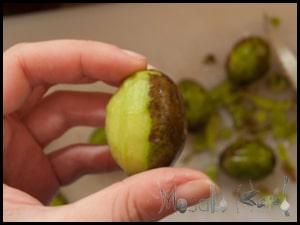
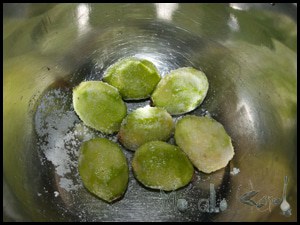
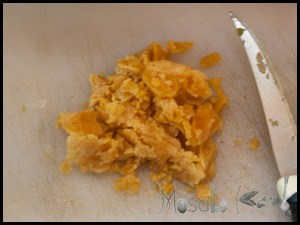
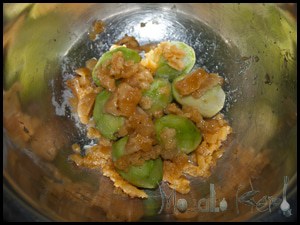
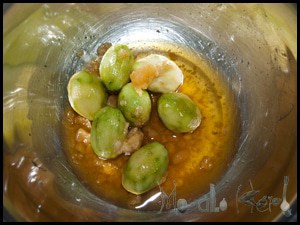
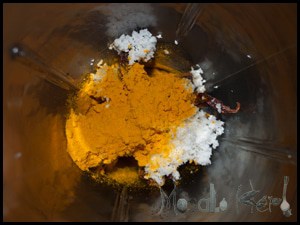
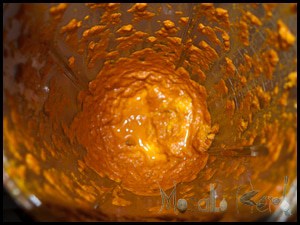
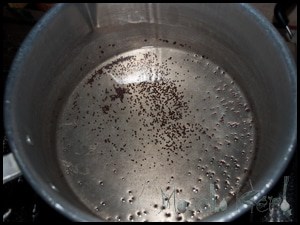
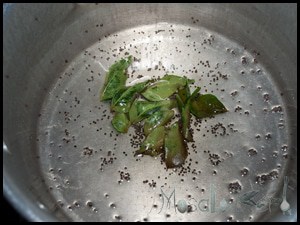
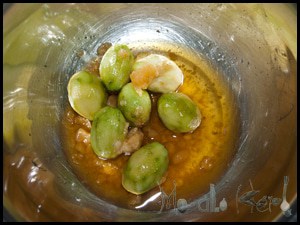
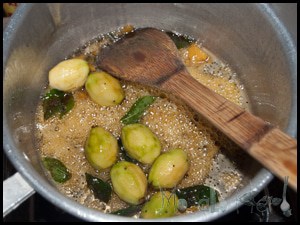
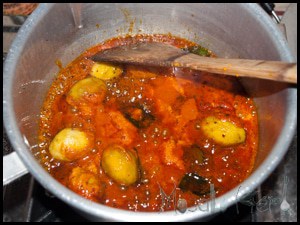
Hi my names rob and I like to cook Thai, Indian, and Sri lankan food I live in brisbane Australia and go every couple of months to the inala markets they have a lot of Asian foods and produce that you can't get anywhere else I highly recommend them. Two things I got there which I couldn't elsewhere are hog plums and breadfruit
Hi Robert, I had no idea that you could get hog plums in Brisbane. I assumed that breadfruit is a thing in Australian cities but didn't think hog plum reached that far. That's really cool, so you will be able to try some of my tropical food recipes. 🙂
Hi it's Robert from Brisbane again , sorry I haven't replied recently , just over a year ago I got married I've never been happier anyhow if you ever come to Brisbane, be sure to check out the inala markets they've got a lot of stuff you can't get elsewhere but the fruit and vegetables are seasonal I love going there
Congratulations Robert! Thanks for the suggestion, I will keep this in mind about inala markets and Brisbane. I bet someone else will find this useful as well.
Its just delecious...we prepare these in karnataka as well..its called kayirasa ..but recepi s so good...have u tried with mango instead of hog plums? They r not avoilable in all seasons so other seasons mango or pinaple r alternatives .however taste differs:-)
Yeah thanks for mentioning that on can use green mangoes as well (or bilimbi).
Hi I was wondering what kind of coconut you are using to get it to a smooth paste? The brown ones Ive bought has too much fiber in it, kind of hard to mix. Thanks
Mike any ripe coconut. It can be that a very old coconut can become quite fibrous in that case you need a good blender to make the paste for the curry smooth. Usually locals in Goa place the scraped coconut into a blender with the other ingredients and they keep the blender to work for a while until the paste is complete smooth.
Did you buy a whole raw coconut and scrape it yourself or did you buy raw grated coconut flesh in packets? Some of the budget raw grated packets in some parts of the world can contain pieces of the coconut wall, you would have to pick them out. When using a raw whole coconut in a curry you can either scrape the flesh out with the help of a tool or gadget and when you do this you shouldn't scrape too close to the brown coconut wall, or you cut out the white flesh by separating it form the wall of the coconut and then add the pieces to a grinder.
Not sure this type of fruit is available here, would you suggest an alternative?
You should try them, that tart taste is just magical in a curry, just like that one on top!
I might have seen these in here..but don't remember cooking anything with it..now I have a reason to do the same!
WOW, looks amazing 🙂 Love your blog
thank you, hope to see you more around in the future. 😉
I have never come across this fruit in India, but then again, I went towards the South where our language and accent are totally different! Having never lived in India, there is so much I don't know about so many things!
This curry looks amazing though. I will have to see if I can find these plums here..probably not.
Nazneen
you have never lived in india? I thought u were somewhere here around right now. =)
So true accents and languages are different! Apparently some type of the spondias is available in south america, so u might have a chnce to get it in the US.
Enjoyed learning about new dish and reading about your story. 🙂 I always feel you are such an international person living abroad dealing with all the cultural differences and learn new dishes and ingredients. Not to mention language! I would love to try this curry with interesting plum!
I think so its fun to learn all those wisdoms, they are very valuable in my opinion. I know you would love this dish nami. 😉
LOL! You made me laugh Helene...haha.
^.^
heyyy....ambade curry looks delicious!!! we make something called menaskai with it..Its like a curry and has coconut, black sesame based gravy..Your version is lip smacking 🙂 How are u doing? You back in India??
Hi Prats! I am back already since July, otherwise I am fine. =) thanks for asking!
Now, you ought to tell me more about your black sesame gravy ambade recipe. =P
Wow! That curry literally made my mouth water!! 😀
Kiran you would go nuts for it. XD
This fruit is certainly new to me but that dish looks so inviting! You're a great cook, Helene!
Thank you Maurren, too kind of you! =D
It's so much fun to come to a site and learn something new. I had never heard of nor seen this fruit before. Very interesting fruit. I'm very impressed with what you made with it. I guess I never think of a curry made with any kind of fruit except for maybe tomatoes. This does look so good and obvious ambade and curry is a great complement!
Hey Mj! =)
Glad you are sharing the same fascination towards intriguing new foods as I do. You might not come across those fruit though, they r uncommon in india as well, but you could use green mangos instead or green mango powder, to give the dish the tartness it needs.
Believe it or not, Helene, we have the same problem here in the states too. I know it can be troublesome to try and translate but oh how language adds to the flavor of each and every region. I guess it is true in India too. Your curry sounds most intriguing and I'm delighted you prepared it to share...
Hi Louise! Oh yeah i know the Louisiana dialect is really strong, I wouldn't understand a words as well. Here somehow it is different. India has 25 official languages and a couple of different scripts, even I dont know how many there are exactly.
Twitter is great if you can't remember names or spellings of things! 😀 And I've never seen that fruit before but whenever I visit a country, I love to see the local market as the f&v are so different!
only for spelling of names? LOL
you are right, there r fruits out there, that are so rare, sometimes u have to really dig into your search, otherwise u might just miss them.
If I am not mistaken, we call this fruit as amra. Oh yes, curries make with amra surely taste fabulous and I love anything with sour and spicy touch.
The curry looks fabulous and will be great for the rice we eat almost everyday.
Nava, thank you it means a lot to me when a native local compliments me like that. =)
Helene! Thank-you so much for visiting my blog and leaving such a sweet comment! Its great to be appreciated by an accomplished cook like you!
I was wondering where I have seen you and then I relaized a coupe of years ago you were on a food show on Television! :))
Its so wonderful that you have adapted so well to the Goan way of life!
I am from Pune ...so I visit Goa a lot! I hope we interact a lot more based on our shared passion for cooking!
Lots of love and sunshine! Im going to be following your blog 🙂
sushiandcuttingchai.blogspot.in
Hi Aditi!
Thank you for the sweet comment and kind words. =) Oh that... XD
Hope so as well that we will be able to interact more with each other in the future!
Really interesting post! I knew India had many different languages, but it never occurred to me that just figuring out what something was called would be such a problem. This curry sounds delish - I love adding sour things to a curry. Good read - thank you.
thank you kitchenriff. =) It wouldn't have occured to me either, if I hadnt experienced it for myself. 😉
Your curry looks delicious! I love all your photos 🙂
thank you dear
HA! Awesome! Twitter followers to the rescue!
totally! 😉
It's always great to learn about new foods at your blog. This curry sounds wonderful!
thanks Asmita, what a great compliment! =D
These spondias fruits are new to me. The curry looks very flavourful!
it is flavourfull, but bareable for a westerner! Te coconut smooths it all down and even sweetens the curry a bit.
True. Not only the written language is different, even the script is different. So while Gurmukhi and Gujrati might use devanagari script, they are completly two different written languages. While Tamil and Telegu are completely different script altogether. Unbelievable!
Yeah exactly! Minnie your country isn't called for nothing Incredible India, right? 😉
Hi
Is it you or the Ambade that makes this recipe so tempting and sluurrrpp?
Jaggery n coconut with the tangy hog plums can create a nervous dispatch!! Yummmm.
I've to flag this! Thanks!
We call this as amte kai.. and make pickles out of these. These grow wild in our estates in coorg.. Nice curry..!!